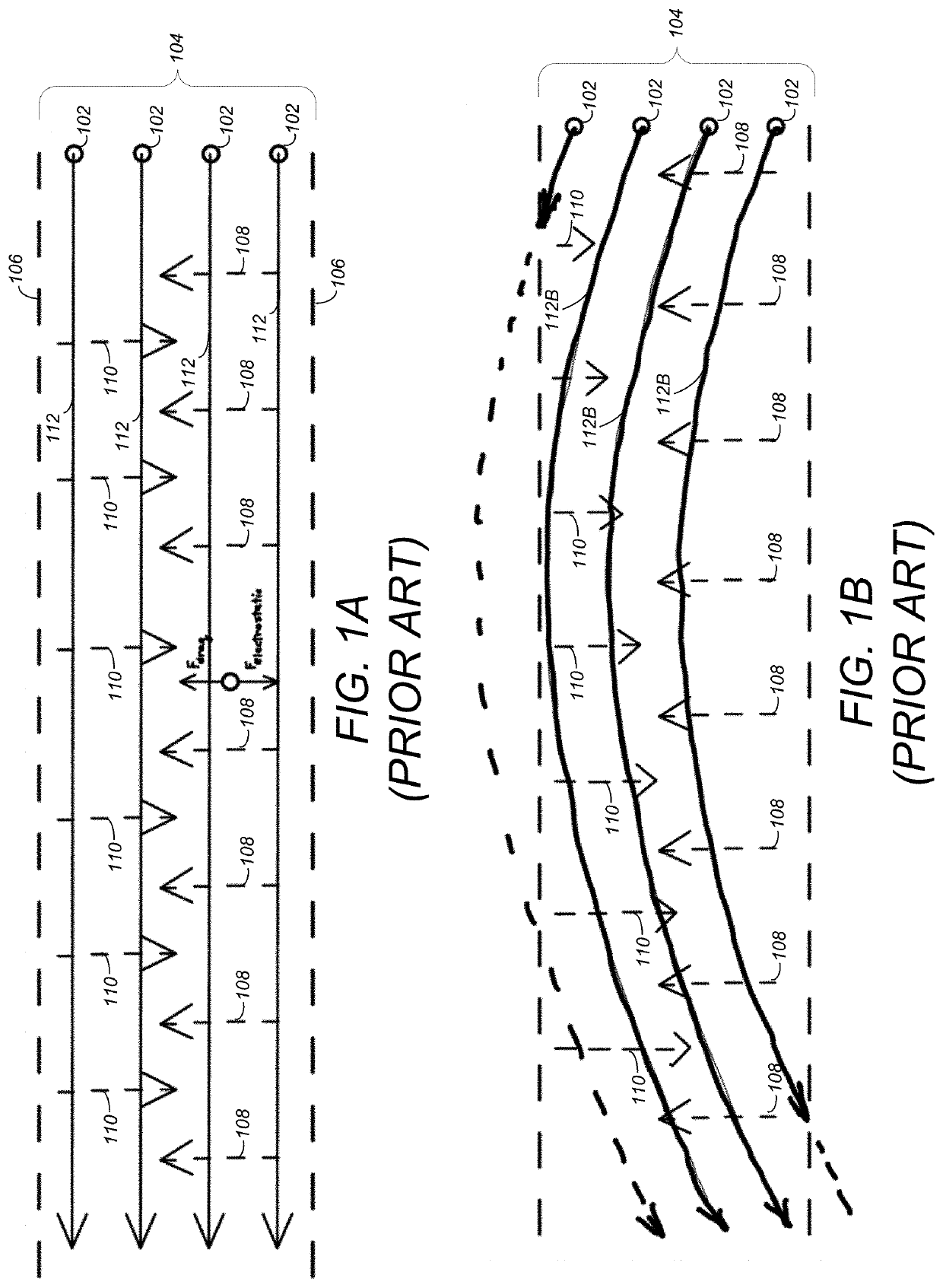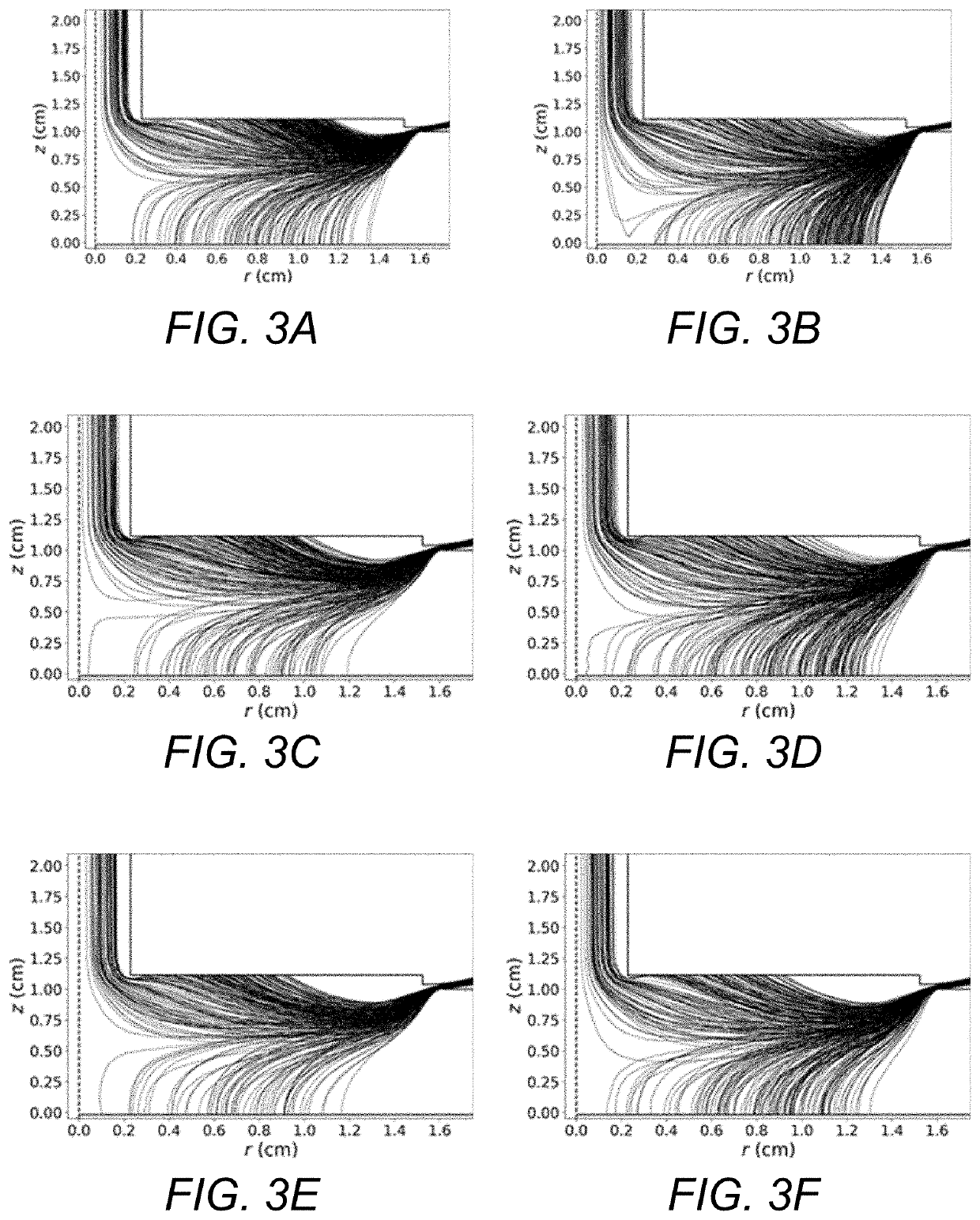Scanning opposed migration aerosol classifier
a technology of ion/aerosol and scanning opposed migration, which is applied in the direction of dispersed particle separation, separation processes, instruments, etc., can solve the problems of increasing losses relative to constant voltage classification, dma's inability to resolve differences in particle size, and voltage stepping slows down size distribution measurement, so as to overcome the efficiency loss of operation and improve time response and duty cycle
- Summary
- Abstract
- Description
- Claims
- Application Information
AI Technical Summary
Benefits of technology
Problems solved by technology
Method used
Image
Examples
Embodiment Construction
[0052]In the following description, reference is made to the accompanying drawings which form a part hereof, and which is shown, by way of illustration, several embodiments of the present invention. It is understood that other embodiments may be utilized and structural changes may be made without departing from the scope of the present invention.
Particle Trajectory Simulation
[0053]Overview
[0054]Extensive numerical simulations of the ROMIAC of [Mui, Thomas, et al., 2013] revealed that the particle trajectories vary dramatically from particles that leave the classifier early in a scan to those that leave late, and that, owing to the nature of the sample entrance design, particles that enter the classifier at different times can exit, and be counted, at the same time. Scans with the voltage varying in an exponential ramp between 10 V and 9800 V (either increasing—up-ramp, or decreasing—down-ramp) were examined, with ramp times ranging from 100 s to as little as 3 s. These simulations r...
PUM
| Property | Measurement | Unit |
|---|---|---|
| diameter | aaaaa | aaaaa |
| particle size distribution | aaaaa | aaaaa |
| size | aaaaa | aaaaa |
Abstract
Description
Claims
Application Information
 Login to View More
Login to View More - R&D
- Intellectual Property
- Life Sciences
- Materials
- Tech Scout
- Unparalleled Data Quality
- Higher Quality Content
- 60% Fewer Hallucinations
Browse by: Latest US Patents, China's latest patents, Technical Efficacy Thesaurus, Application Domain, Technology Topic, Popular Technical Reports.
© 2025 PatSnap. All rights reserved.Legal|Privacy policy|Modern Slavery Act Transparency Statement|Sitemap|About US| Contact US: help@patsnap.com



